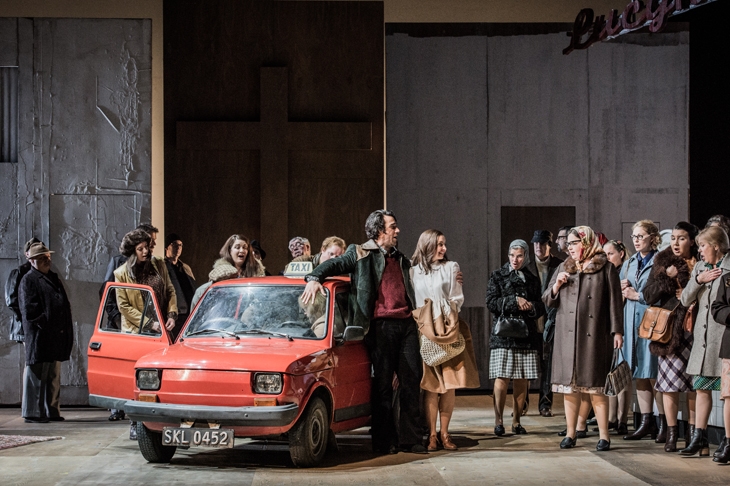Did you know that they used to make the Fiat 126 in the Eastern bloc? They did, apparently. There was a plant at Bielsko-Biala, and the car was widely driven throughout Poland in the 1970s, when you only had to wait a couple of years to buy one. It became an emblem of personal freedom, and Poles even gave it a nickname: Maluch, or ‘little one’.
That’s the principal insight that I gleaned from director Karolina Sofulak’s decision to set Cavalleria rusticana in communist Poland. She explains her thinking in the programme book: essentially, 19th-century Sicily was Catholic and repressive, and 1970s Poland was Catholic and repressive, so why not? Cue the latest one-size-fits-all operatic design cliché — fastidiously rendered depictions of 1970s squalor. In recent seasons I’ve seen the same basic combination of nylon, stained walls and greasy hair applied to Bellini, Humperdinck and Stephen Sondheim. Charles Edwards’s sets and Gabrielle Dalton’s costumes are in the best tradition of the genre, even down to the eyestrain-inducing lighting, which at times made it impossible to see anyone’s face properly.
On the other hand, Alfio’s little red Fiat stole the show every time it trundled into Mamma Lucia’s sausage shop (this is one of those stagings where religious processions take place in someone’s living room).

Get Britain's best politics newsletters
Register to get The Spectator's insight and opinion straight to your inbox. You can then read two free articles each week.
Already a subscriber? Log in







Comments
Join the debate for just £1 a month
Be part of the conversation with other Spectator readers by getting your first three months for £3.
UNLOCK ACCESS Just £1 a monthAlready a subscriber? Log in